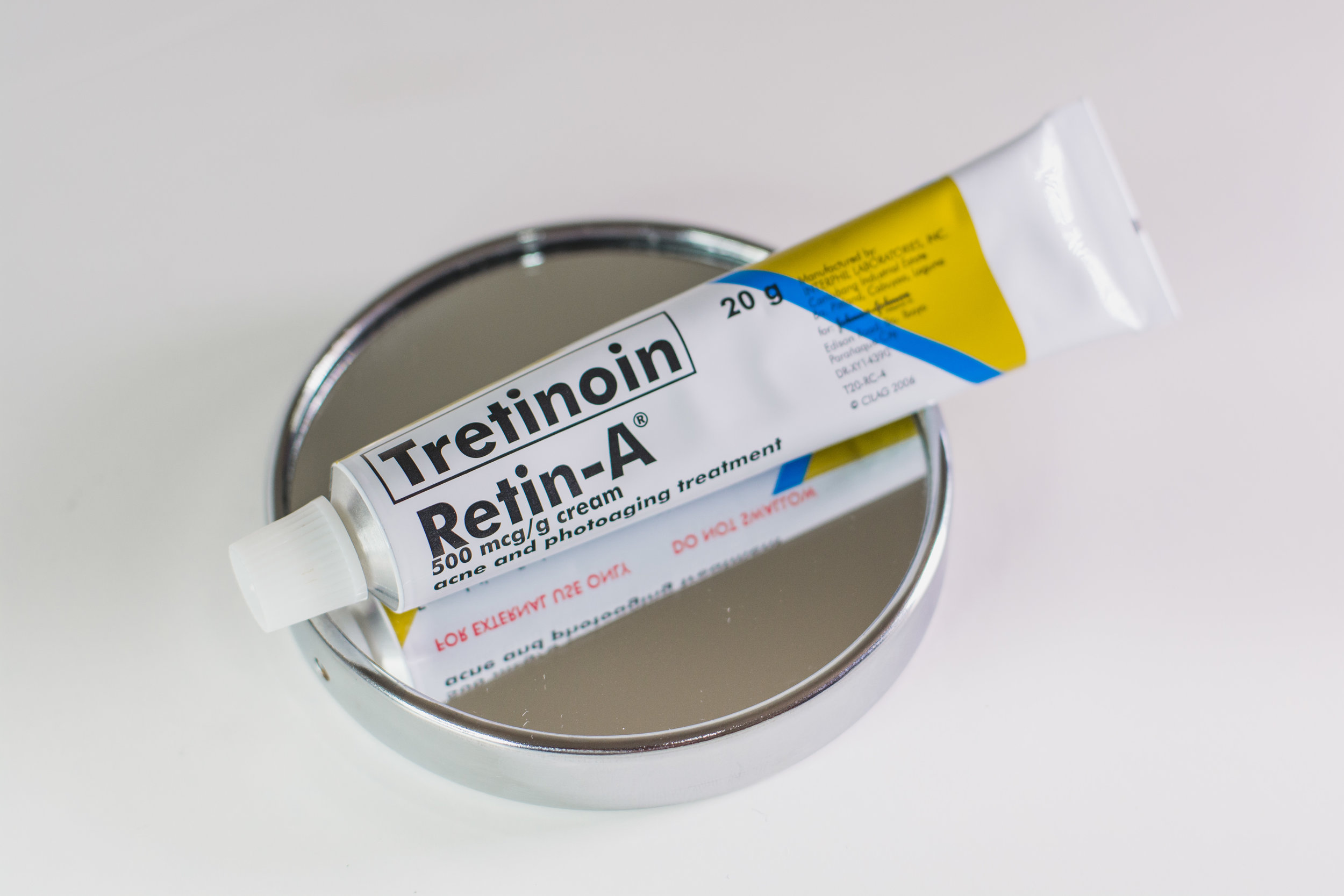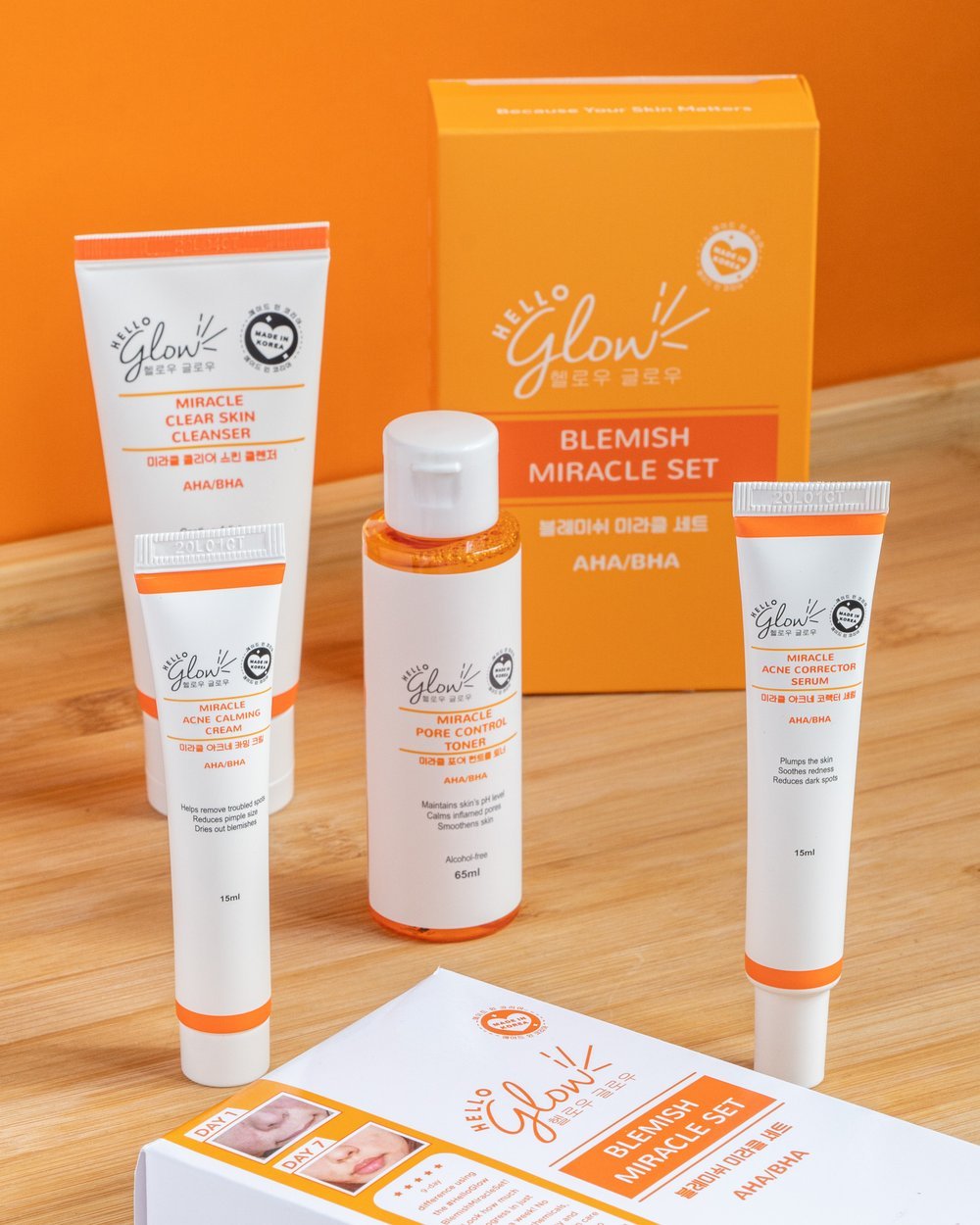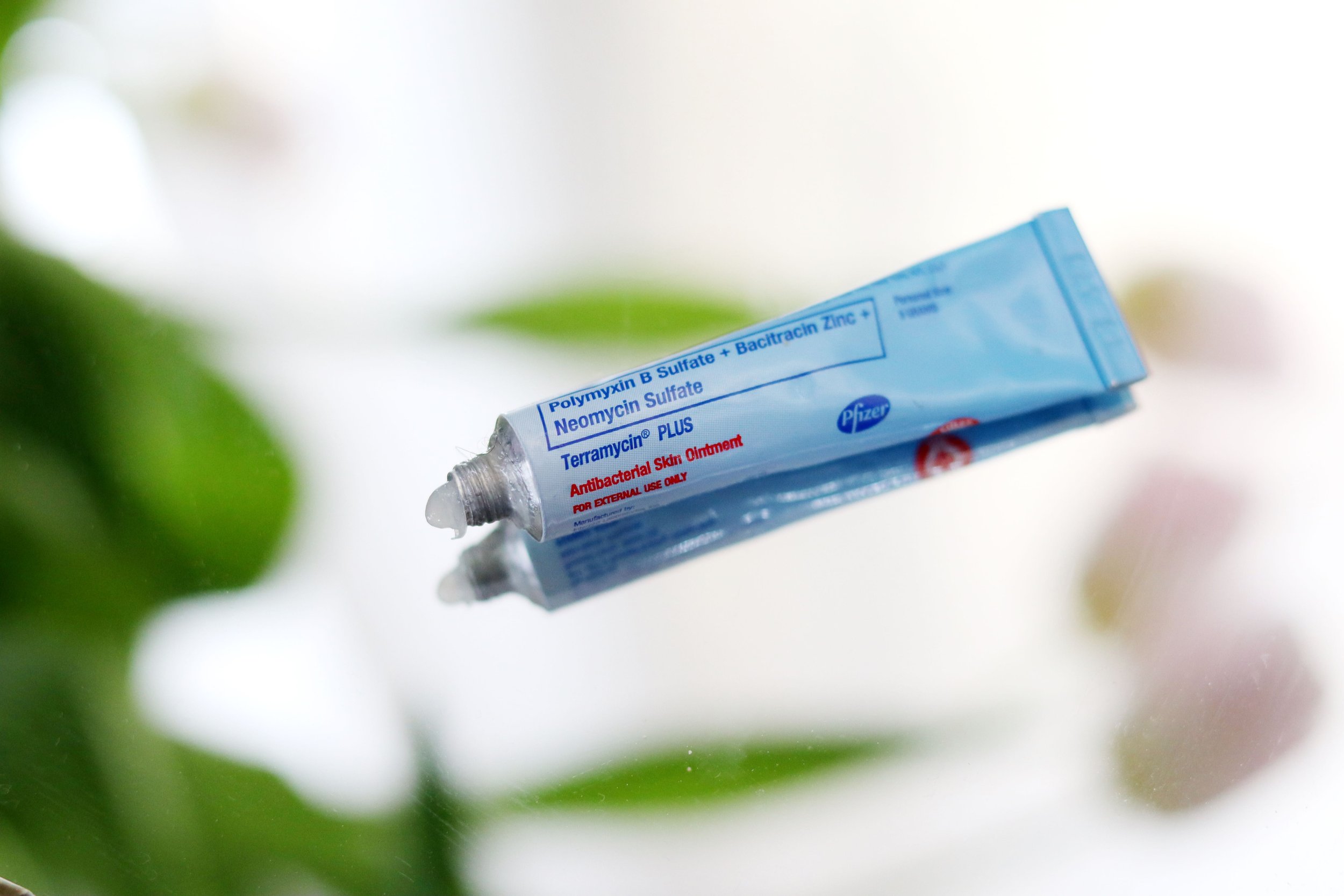The 101 On Tretinoin: Everything you need to know about this popular acne treatment
Disclaimer: This article does not substitute for doctor advice. We recommend consulting with your dermatologist first when starting a new product. If you experience adverse effects, stop what you are using and see a dermatologist immediately.
My first bout with tretinoin was not a good one. In fact, it caused me my first trip to the dermatologist. I was in middle school and suffering from acne. And since I was a teen who didn’t know any better and would pick at my pimples, I ended up with many dark scars or hyperpigmentation! I would constantly look for quick ways to get rid of the marks. Out of curiosity, I tried using Maxi Peel’s #3 Exfoliant Solution (because I was a badass - don’t be like me) after seeing ads about it.
The liquid contained 0.025% tretinoin and promised instant peeling of my scars after just one day of use. It did work, to be fair. My skin started peeling and the lightest of my scars started fading. However, I had absolutely no idea about how to properly use tretinoin. I didn’t wear sunscreen and would apply it more than three times a day in an effort to make my scars lighten faster! I ended up having to see a derma because my skin peeled so much that it became red and raw. I was diagnosed with a bad case of chemical burns.
Despite the painful experience, my interest in skincare was sparked and I began to regularly use sunscreen. I also decided to learn more about the powerful ingredient that (literally) burned me and about how to use it properly since I saw how it made a difference in lightening my scars.
What is tretinoin and how does it work?
Tretinoin is a derivative of retinoid, one of the best ingredients used to treat acne. Reading about retinoids can be pretty confusing as its derivatives (retinol, tretinoin, isotretinoin) differ in performance and qualities. Retinoic acid is the component that can directly affect the skin cells, encourage collagen development, speed up cell turnover, and unclog pores, among others. Whatever type of retinoid you use, it has to first be converted by the skin enzymes into retinoic acid so it can work its magic on the skin.
Retinol (also known as vitamin A) is the derivative that is considered the most gentle as it goes through two steps of conversion (retinol > retinaldehyde > retinoic acid) before turning into retinoic acid. It is also more easily accessible and available, often mixed in creams and gels that can be purchased over the counter.,
On the other hand, tretinoin (also known as all-trans retinoic acid) is already a retinoic acid. It does not require conversion, so it’s more irritating to skin. This also means that the effect is quicker! Unlike retinol which takes weeks to visibly show results, you can see improvements almost instantly when using tretinoin. It affects the skin’s usual way of producing oil and causes cells to turn over much faster, which is why dark spots and other blemishes can fade away faster. It also boosts the skin’s production of collagen so skin looks plumper, firmer, and smoother. Apart from treating acne, it’s a good option for minimizing the signs of aging such as fine lines and wrinkles. It’s a really potent ingredient, which is why it needs to be used with care and ideally under prescription, with the professional advice of a dermatologist.
How to use tretinoin
Tretinoin usually comes in prescription creams of with different strengths: 0.1% (highest), 0.05%, 0.025% or at times, 0.010%. While it may have the most powerful effect, the higher strength tretinoin does not necessarily mean a faster or better effect. Tretinoin at its highest percentage can also mean that it can be the most irritating to skin.
Whatever strength of tretinoin, it is advised to first apply it according to a schedule (for example, every other day) to test the skin’s tolerability. It is possible that the skin may be able to tolerate a tretinoin cream in 0.1% applied twice a week, yet not tolerate a tretinoin cream in 0.025% applied every night. It’s best to ask a derma to prescribe a tretinoin formulation and schedule that will suit your skin’s needs.
Application and dosage of tretinoin creams can differ based on the product itself. Some can be applied to the entire face while others are best limited to affected areas only. Though that is variable, there are general tretinoin application guidelines that you should always follow:
Thin application of the product (normally pea-sized amount for the whole face)
Application on completely dry skin (usually 20 to 30 minutes after washing the face: A wet face increases the absorption of products, so applying tretinoin on your face while damp can increase the chances of irritation.
Application during the evening routine: Using tretinoin makes the skin more light sensitive, so it’s best to only apply it at night and to makes sure to apply an ample amount of sunscreen the next morning.
Avoid combining use with acids: While using tretinoin, it’s best to avoid using other skincare products that contain AHA, BHA, and vitamin C as these are also potent active ingredients that can cause skin to become further irritable.
Religious use of moisturizer
Possible side effects
Tretinoin can make the skin really dry, flaky, and sometimes even red and irritated. In my experience, there’s usually a tingly, warm sensation that follows application. Some people may also experience purging before acne begins to clear up, because tretinoin speeds up cellular turnover.
I personally find tretinoin to be quite a challenging product to use: too much can cause your skin to burn (as I experienced) but too little will leave you wondering if it’s working. You have to find the best way to make it work for you. One method is to “buffer” the tretinoin cream by mixing it with your usual moisturizer to slightly weaken the potency. This also helps to restore moisture to the skin since tretinoin can have a drying effect.
Another popular method is short contact therapy (SCT) which is simply washing off the product after a short period of application. This can take anywhere from 30 seconds to 5 minutes, to reduce the skin’s exposure to tretinoin and lessen the chances of skin irritation.
What to try
Locally, we only have a few products that carry the “tretinoin” tag, as retinol seems to be the more popular option. Some tretinoin products available here are the following:
Retin-A (P731 at drugstores) is a yellow-white ointment that contains 0.025% tretinoin. It’s is easy to spread on the skin for a thin but even coverage. Of the three tret products that I tried, this made my skin peel the fastest.
Maxi Peel Exfoliant Solution (P72 at drugstores and supermarkets) is a combination of tretinoin and hydroquinone, a bleaching ingredient. It comes in different strengths as identified by the numbers 1 (0.010%), 2 (0.025%), and 3 (0.025%). This is a brownish liquid that is applied like an astringent. This was the first tretinoin product I tried and made the mistake of applying it every day, causing my skin to turn red and peel badly.
Erase Pimple Solution (P105 at drugstores) is a clear oil packaged in a nifty roller bottle. This is particularly marketed to treat scars and lighten dark elbows. It works the slowest out of the three listed here, most likely because the ingredients actually specify lactic acid and retinyl palmitate, which is a combination of palmitic acid (fatty acid) and retinol (vitamin A).
I still use tretinoin by choice but now do it under the supervision of my derma. After that horrible first experience, I make sure to follow the skin tolerability test when starting a new product and to never skip my sunscreen. In my experience with trying these three, I found Retin-A to be the most effective in terms of drying out my pimples and helping my scars fade. I am very careful to not apply too close to my eye area, as it makes my skin sensitive and being to peel.
Using Retin-A on its own proved to be too intense for my skin (I still have small wounds around my nose from excessive peeling to prove it), so I recently started using it mixed with aloe vera gel. I also only apply every other night to allow my skin to rest from exfoliation. I still see effects of the tretinoin (such as peeling) but in a much slower pace.
Using tretinoin may take a bit of a learning curve so it’s best done with the supervision of a dermatologist. It can be really damaging when used improperly. Nevertheless, it’s one of the best products to be used for treating acne-prone skin. Have you ever tried using tretinoin? What are your favorite tretinoin products, and best tips for application?
References: Stacked Skincare, NY Times, Mayo Clinic, Premier OKC , Marie Claire, Real Self
Photography by Nicole Quindara















